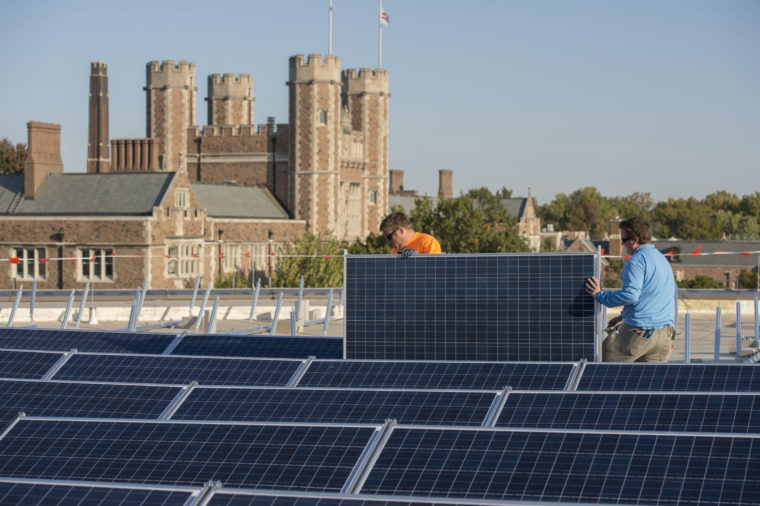The solar industry in Missouri is likely to take a particularly hard hit as a result of a recently announced import tariff on solar cells and panels, according to Phil Valko, assistant vice chancellor for sustainability at Washington University in St. Louis.
The domestic solar market had been bracing for a tariff, and, as a result, prices were already rising. But, Valko said, “For a state like Missouri with lower utility rates and a comparatively small solar market, the new tariff will likely slow solar development more than in strong-market states with higher utility rates.”

The Trump administration recently announced a 30-percent import tariff for crystalline-silicon solar cells and panels in a response to two solar companies who argued that low-cost imported solar panels — primarily from China — have made it impossible to stay profitable and keep their U.S. manufacturing facilities open. “These companies argue that without an import tariff to level the playing field, they will be forced to lay off American workers,” Valko said.
But while low-cost solar panels may have hurt U.S. panel manufacturers, Valko points out they also fueled significant growth in the U.S. solar market. “Low-cost panels have resulted in far more jobs in other parts of the U.S. solar economy,” he said.
According to the National Solar Jobs Census, conducted by the Solar Foundation, manufacturing represents less than 15 percent of solar-related jobs in the U.S.; the actual manufacturing of solar panels is just 15 percent of that. “More than 50 percent of U.S. solar workers are installers and maintenance crews, and most of the remaining jobs are in project development, engineering, sales, distribution and financing,” Valko said.
According to Greentech Media Research, a clean energy market analysis firm, the tariff will reduce solar installations by 11 percent through 2022, resulting in a net loss of 23,000 U.S. jobs in the industry.
Using data from Greentech and local solar companies, Valko estimates a near-term cost increase between 3 and 6 percent for residential projects, and between 7 and 12 percent for commercial installations and utility-scale projects.
“This would be a setback for efforts to drive down greenhouse gas emissions in Missouri, which has among the highest carbon-intensity grid electricity in the U.S.,” Valko said, “and it would result in job losses in what was previously a rapidly growing part of our economy.”
